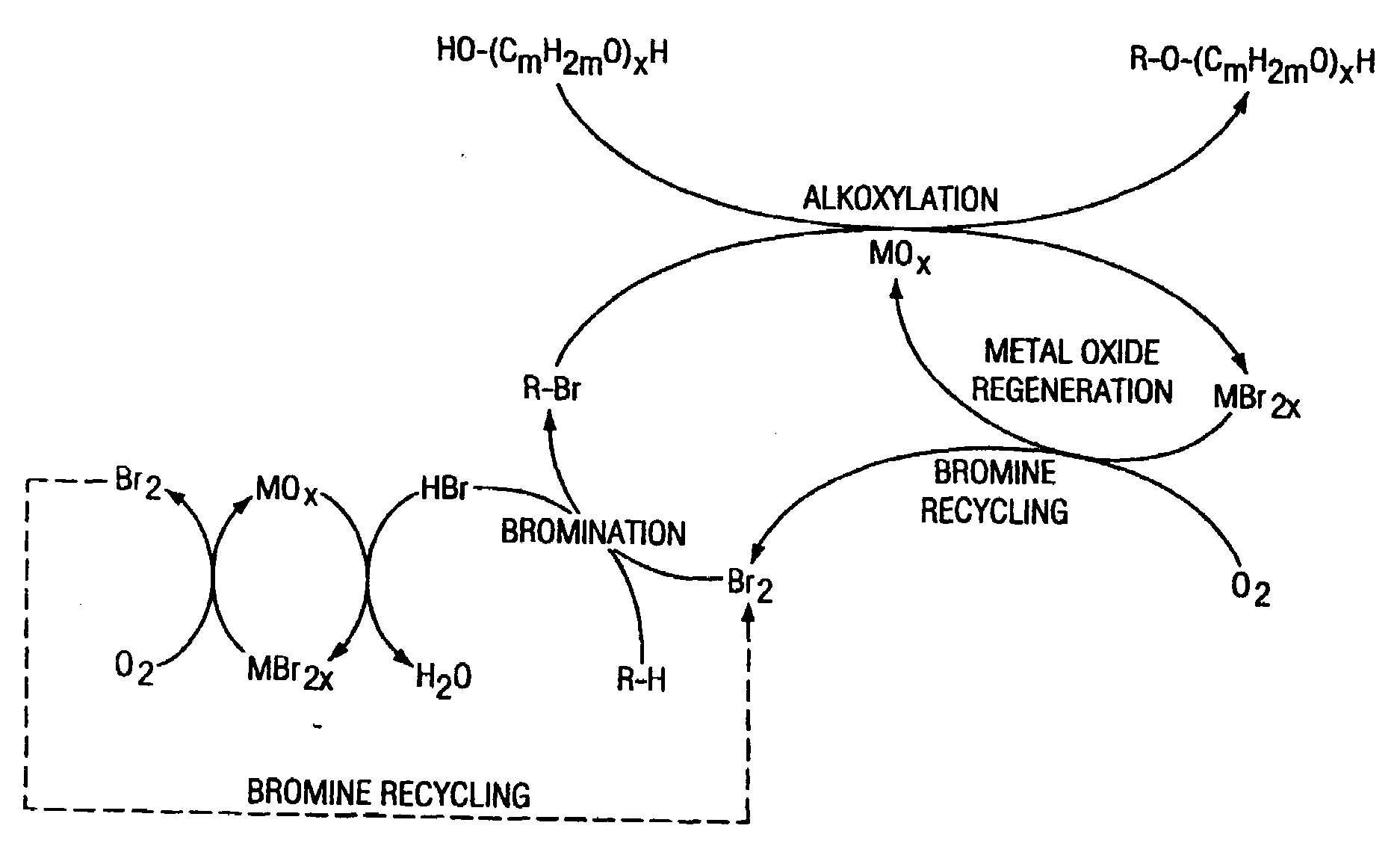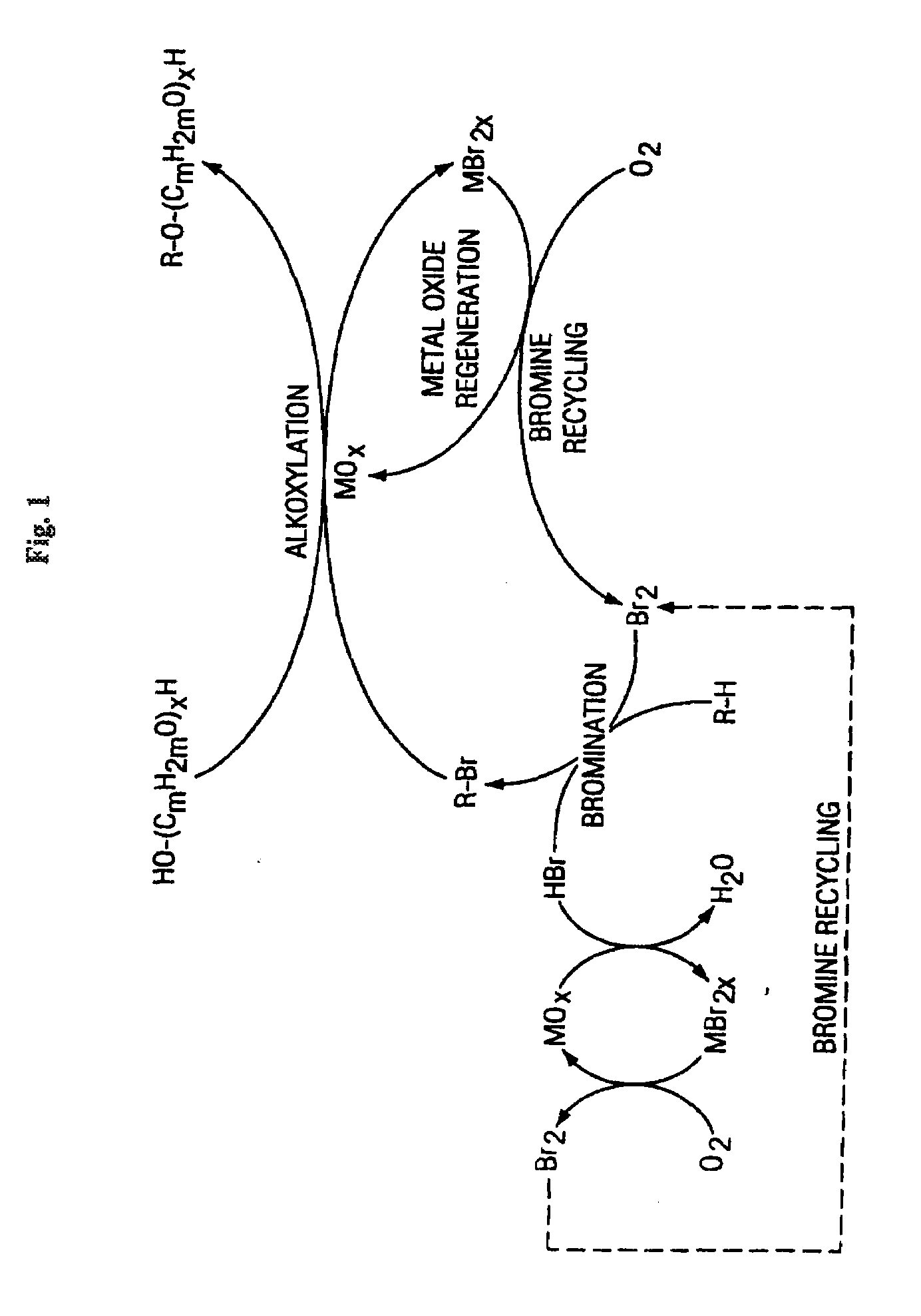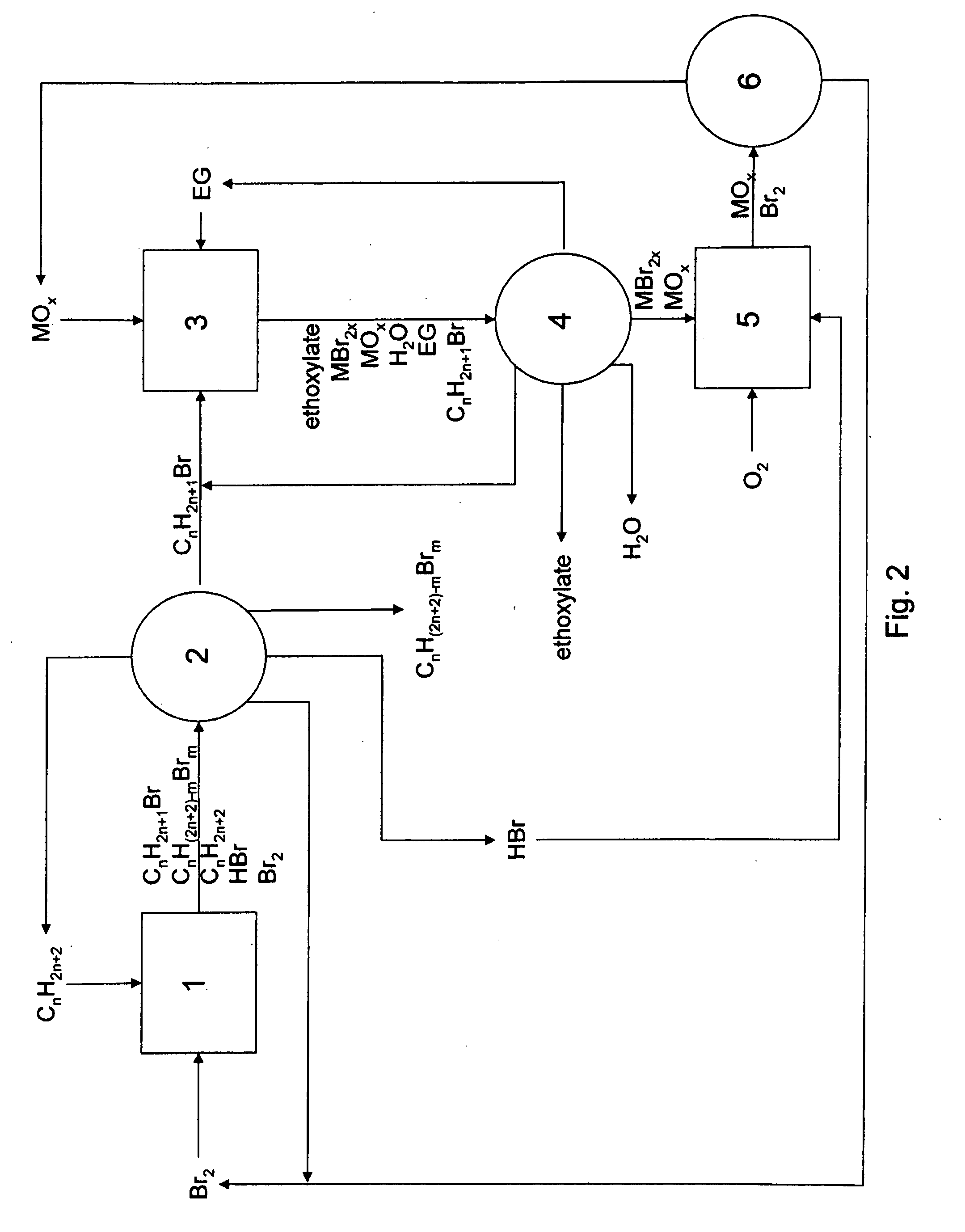Method of making alkoxylates
a technology of alkoxylate and alkoxyl, which is applied in the direction of ether preparation, ether preparation by compound dehydration, sustainable manufacturing/processing, etc., can solve the problems of volatile and unstable nature of ethylene oxide, cost of alcohol, and cost of ethylene oxid
- Summary
- Abstract
- Description
- Claims
- Application Information
AI Technical Summary
Benefits of technology
Problems solved by technology
Method used
Image
Examples
example 1
[0061]A c.a. 3 mL stainless steel batch reactor was charged with 0.2549 g of electronic grade magnesium oxide (eMgO) and 0.2543 g of a 75 wt-% 2-bromododecane, 25 wt-% octadecane (as internal standard) solution. The solid and liquid were mixed by stirring with a stainless steel spatula, then 0.3065 g ethylene glycol (EG) was added. The reactor was sealed and agitated for 5 minutes with a vibratory shaker, then placed in a preheated oven at 225° C. for 6 hrs. Once cooled, the organics were extracted with ethanol and analyzed by gas chromatography as well as mass spectrometry for characterization and quantification of products and starting materials. The results of the analysis showed 49% conversion of the 2-bromododecane to products. The products consisted of 56% olefins, 3% alcohols, 40% mono-ethoxylates and 1% ketones.
example 2
[0062]A c.a. 3 mL stainless steel batch reactor was charged with 0.2531 g of copper(II) oxide (CuO) and 0.2500 g of a 75 wt-% 2-bromododecane, 25 wt-% octadecane (as internal standard) solution. The solid and liquid were mixed by stirring with a stainless steel spatula, then 0.0976 g EG was added. The reactor was sealed and agitated for 5 minutes with a vibratory shaker, then placed in a preheated oven at 225° C. for 6 hrs. Once cooled, the organics were extracted with ethanol and analyzed by gas chromatography as well as mass spectrometry for characterization and quantification of products and starting materials. The results of the analysis showed 97% conversion of the 2-bromododecane to products. The products consisted of 58% olefins, 9% alcohols, 32% mono-ethoxylates and 1% ketones.
example 3
[0063]A c.a. 3 mL stainless steel batch reactor was charged with 0.2501 g of copper(II) oxide (CuO) and 0.2538 g of a 75 wt-% 2-bromododecane, 25 wt-% octadecane (as internal standard) solution. The solid and liquid were mixed by stirring with a stainless steel spatula, then 0.1002 g EG was added. The reactor was sealed and agitated for 5 minutes with a vibratory shaker, then placed in a preheated oven at 225° C. for 3 hrs. Once cooled, the organics were extracted with ethanol and analyzed by gas chromatography as well as mass spectrometry for characterization and quantification of products and starting materials. The results of the analysis showed 42% conversion of the 2-bromododecane to products. The products consisted of 31% olefins, 5% alcohols, 63% mono-ethoxylates and 1% ketones.
PUM
| Property | Measurement | Unit |
|---|---|---|
| solubility | aaaaa | aaaaa |
| Hydrophile-Lipophile Balance | aaaaa | aaaaa |
| volatile | aaaaa | aaaaa |
Abstract
Description
Claims
Application Information
 Login to View More
Login to View More - R&D
- Intellectual Property
- Life Sciences
- Materials
- Tech Scout
- Unparalleled Data Quality
- Higher Quality Content
- 60% Fewer Hallucinations
Browse by: Latest US Patents, China's latest patents, Technical Efficacy Thesaurus, Application Domain, Technology Topic, Popular Technical Reports.
© 2025 PatSnap. All rights reserved.Legal|Privacy policy|Modern Slavery Act Transparency Statement|Sitemap|About US| Contact US: help@patsnap.com



